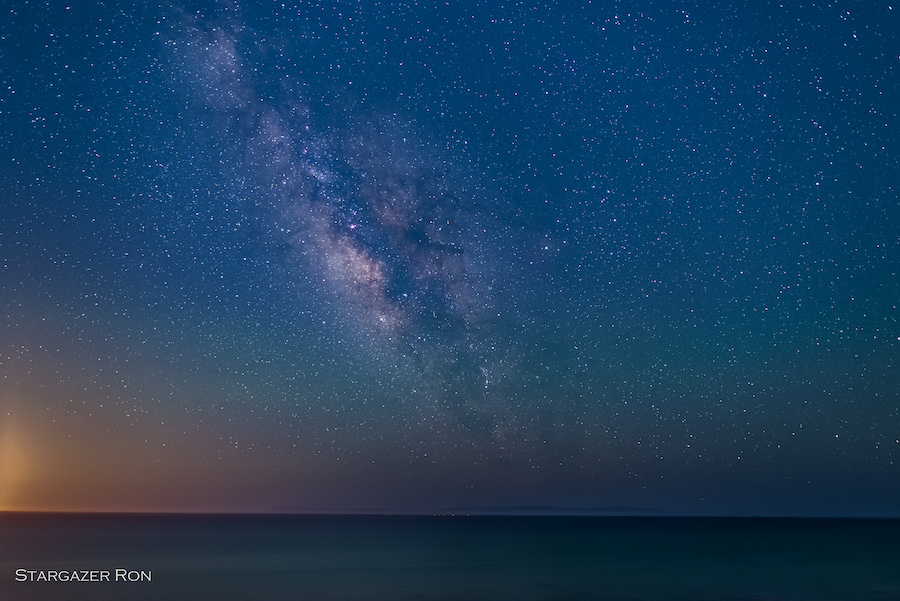Milky Way Season
By Stargazer Ron
Warm summer nights are a perfect time to gaze at the Milky Way, our home galaxy. Beginning in June it becomes visible earlier in the evening. As the summer progresses it rises earlier and its angle increases from about 45 degrees to vertical and then downwards again.

It is difficult in modern times to escape ever increasing light pollution, but we are lucky along our south-facing coast to be able to look across the dark Santa Barbara Channel where there are no lights to mask out the stars. Here’s an image made from Shoreline Park on July 9 at 11:11pm.
As you can see, it provides a grand view of star-studded skies except for the orange glow on the left from downtown Santa Barbara. This photo was made possible by means of a long exposure using a digital camera and modern software.
Note that the human eye loses sensitivity to color at low light levels, so you won’t be able to see it as vividly yourself. Nevertheless, take some time to let your eyes become dark adapted and you will be rewarded by a stellar experience.
Comments
0 Comments deleted by Administrator
Leave a Review or Comment
You must be logged in to post a comment.















Is that the Lagoon Nebula upper center?
Yes, it’s the bright pink splotch in the foreground of a darker dust cloud. And below that, but above the scorpions’s stinger are the Butterfly Cluster (L) and Ptolemy’s Cluster (R), both white.
Oops! Swap L and R.
Very nice! Looking right toward the core of our galaxy.
Thank you for sharing this photo!
Would appreciate learning photo specs: ISO, shutter open time, & how you eliminated earths rotation. Cheers!
You’re welcome JD!
20mm lens, f/2.5, ISO 2000, 26 frames each at 15 sec (total 390 sec) stacked using Sequator: https://sites.google.com/view/sequator/ It will align stars and freeze ground/water.